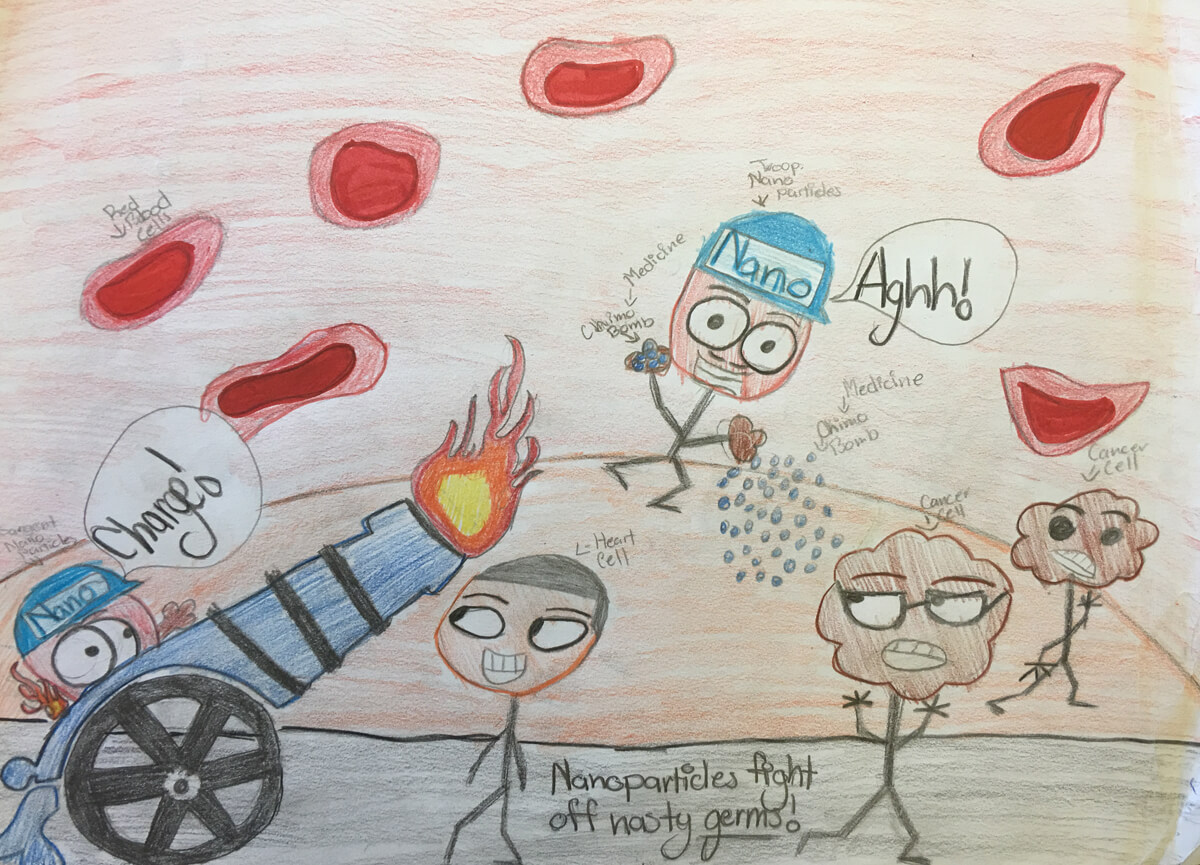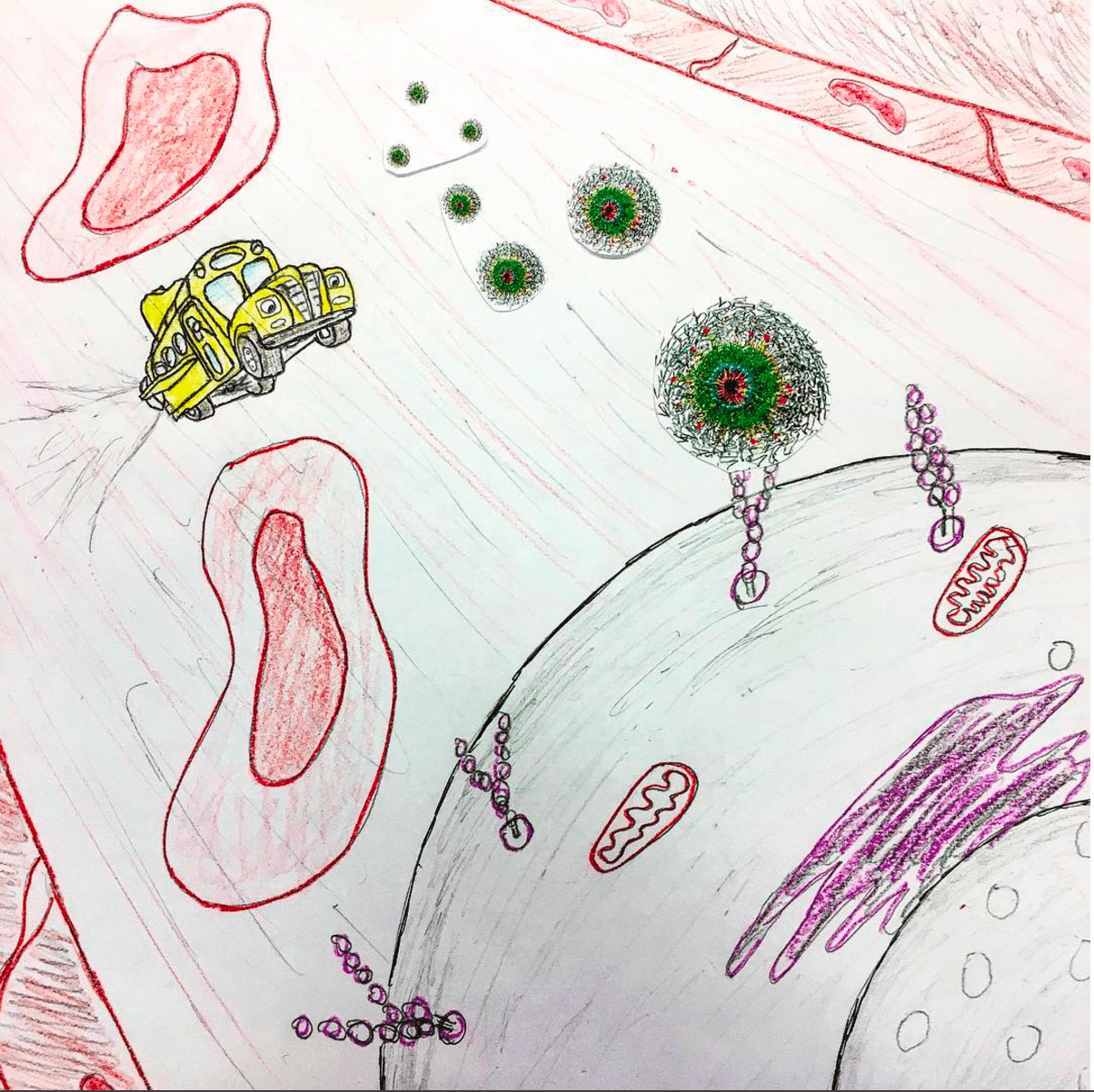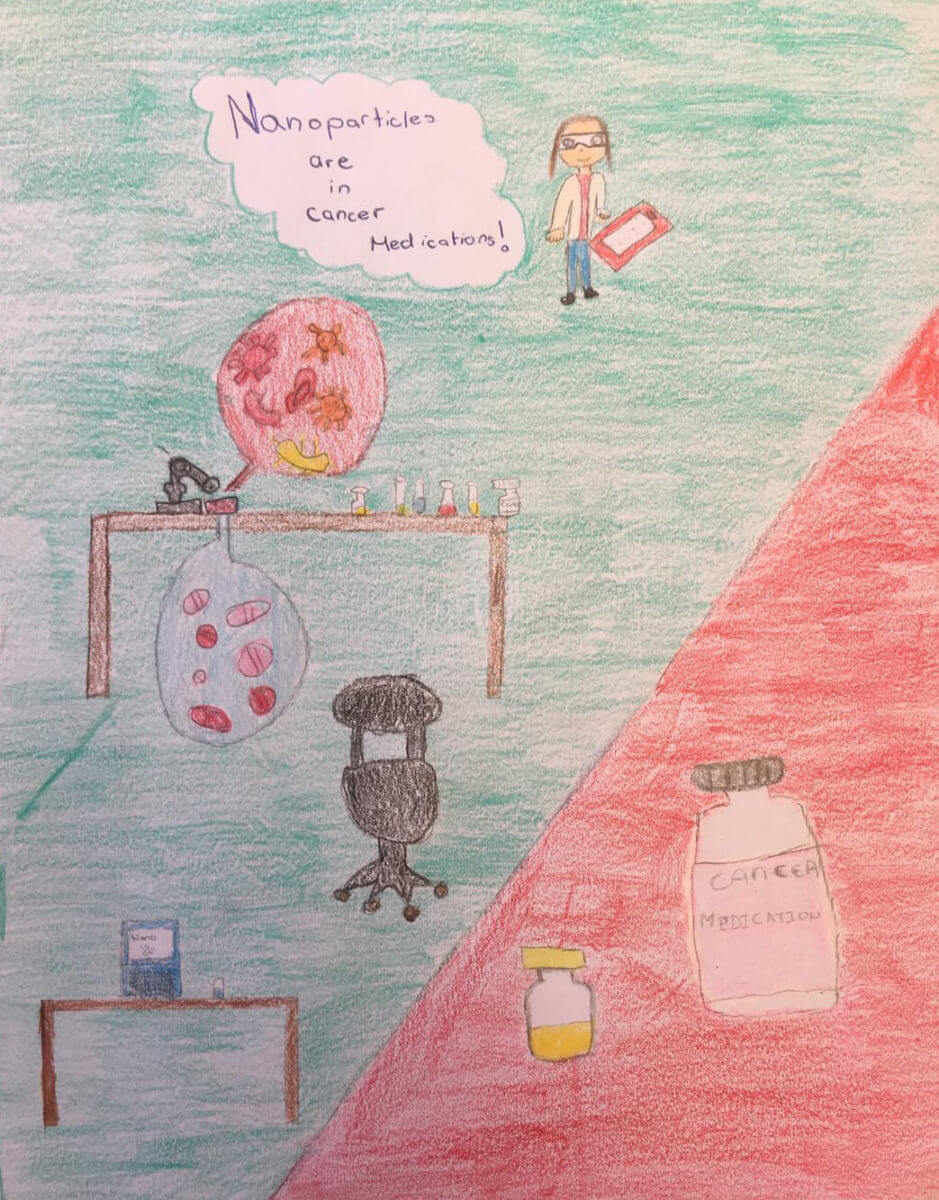
Nanoparticles vs. Germs (Photo courtesy of @nanopeek)

Magic School Bus in the Bloodstream (Photo courtesy of @nanopeek)
For adolescents, social media use is nearly inevitable. According to “Science Daily,” a website that circulates recently developed research news headlines, 76 percent of teenagers in the United States actively use Instagram and Snapchat. Although some concerns emerge from constant social media use, such as decreased attention spans and an increase in seeking peer approval, it can also provide a platform for interactive education.
Eun Ji Chung, a Gabilan assistant professor of biomedical engineering at the USC Viterbi School of Engineering, found a way to “integrate teaching science and engineering with social media.”
In January, she reached out to the 32nd Street School, a USC magnet school, and began working with 6th grade science and media classes to teach them about “nano concepts.”
Chung used activities and analogies to teach the young students about nanometers and nanoparticles.
She had each student examine a piece of their hair and told them it measured about 10,000 – 100,000 nanometers. She used clear nail polish on strips of paper that created nanometer sized films that each reflected different colors.
For nanoparticles, Chung used a relativity analogy, so they could understand just how miniscule a nanoparticle is. She compared the size of the earth to that of a soccer ball, saying it was the same difference as between the size of a soccer ball and a nanoparticle. Then, the students watched a “Magic School Bus” video where the bus shrunk down to the size of a nanoparticle and entered the human body to diagnose an illness.
She had the students in the media class create illustrations of nanometers and nanoparticles. “I believe that putting what they learned on paper would solidify their understanding of these concepts,” Chung said.
Chung took it a step further by integrating social media into the project and created an Instagram account (@nanopeek) that showcased their illustrations.

Volcanoes have nanoparticles (Photo courtesy of @nanopeek)

Nano is Everywhere / Photo courtesy of @nanopeek
Published on October 2nd, 2017
Last updated on October 3rd, 2024










